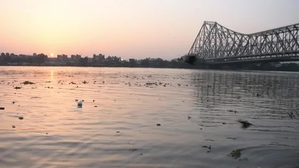Kolkata, Jan 25 (IANS) An association of Kolkata-based environmental activists, under the name and style of Morning Walker’s Guild of Rabindra Sarobar, has outlined a unique initiative to observe and document the current state of the Heritage Ganga and its ghats (concrete banks) in the stretch from Outram to Dakshineswar-Belur in Kolkata.
Rabindra Sarobar, popularly known as Dhakuria Lake, is the biggest artificial lake in South Kolkata and a favourite haunting spot of environmentalists and environmental activists.
The convenor of the association, Somendra Mohan Ghosh, an acclaimed city-based green technologist and environmentalist, told IANS that the expedition will be conducted on February 9 aiming to assess the present situation of the river and its concrete banks locally known as ghats within the stretch in Kolkata.
“This endeavour will provide invaluable insights into the environmental and conservation efforts required to protect this sacred and culturally significant water body,” Ghosh added. He also said that the group will also share the findings of the expedition with common people along with video clips and still photographs of the event.
“A comprehensive report will also be submitted to the appropriate authorities both under the Union and the West Bengal government so that the latter can adopt appropriate steps accordingly,” Ghosh added.
The expedition has been poetically titled as ‘Kolkatar Ganga Ghater Golpo’ (The tale of Concrete River Banks of Ganges in Kolkata).
The initiative is being viewed as quite significant considering that the work for the restoration of Kolkata’s iconic ‘Adi Ganga’ also known as Gobindapur Creek and Tolly’s Canal is scheduled to start soon.
The restoration work comes under the Namami Gange Programme, an integrated conservation mission under the National Mission of Clean Ganga, to accomplish the twin objectives of effective abatement of pollution, conservation and rejuvenation of River Ganga.
The work for the restoration of Adi Ganga is the second biggest revival project under the Namami Gange Programme. Basically, a stream that was part of the Hooghly River flowing in the Kolkata area, Adi Ganga was the main flow of that river between the 15th and 17th centuries.
State government sources said that a total of Rs 753 crore had been earmarked for this particular project, which involves dredging for over 15.5 kilometres.
–IANS
src/uk


























